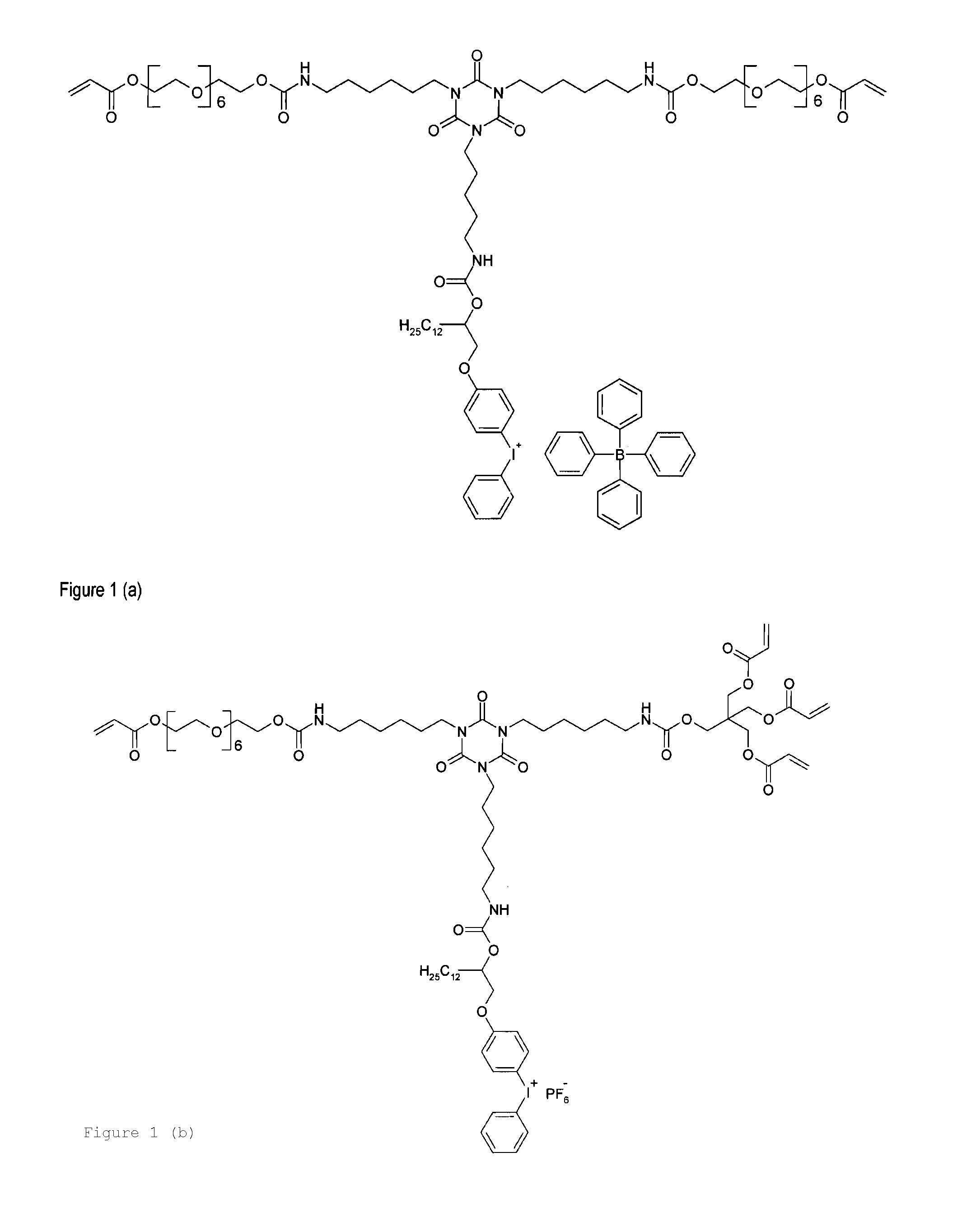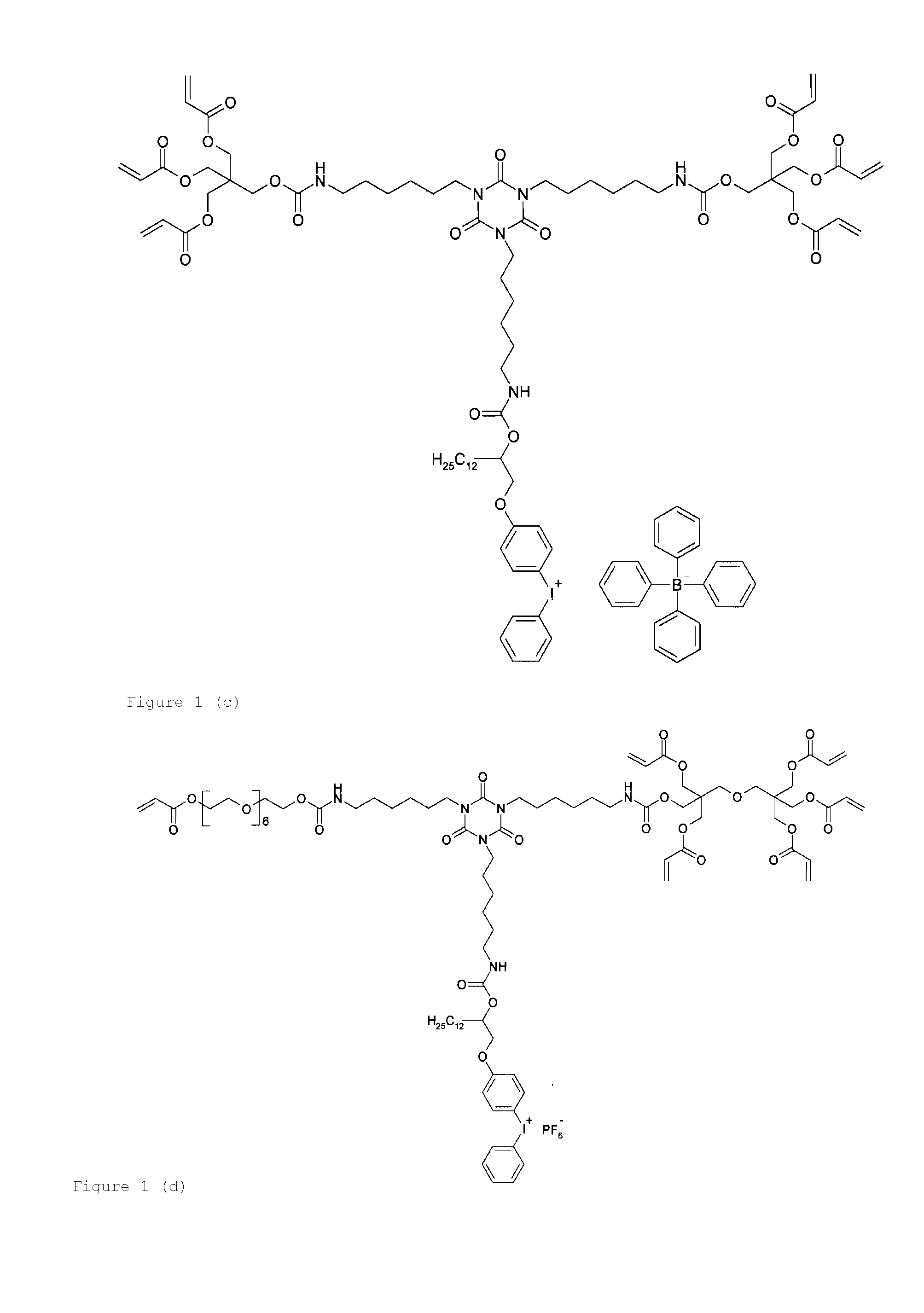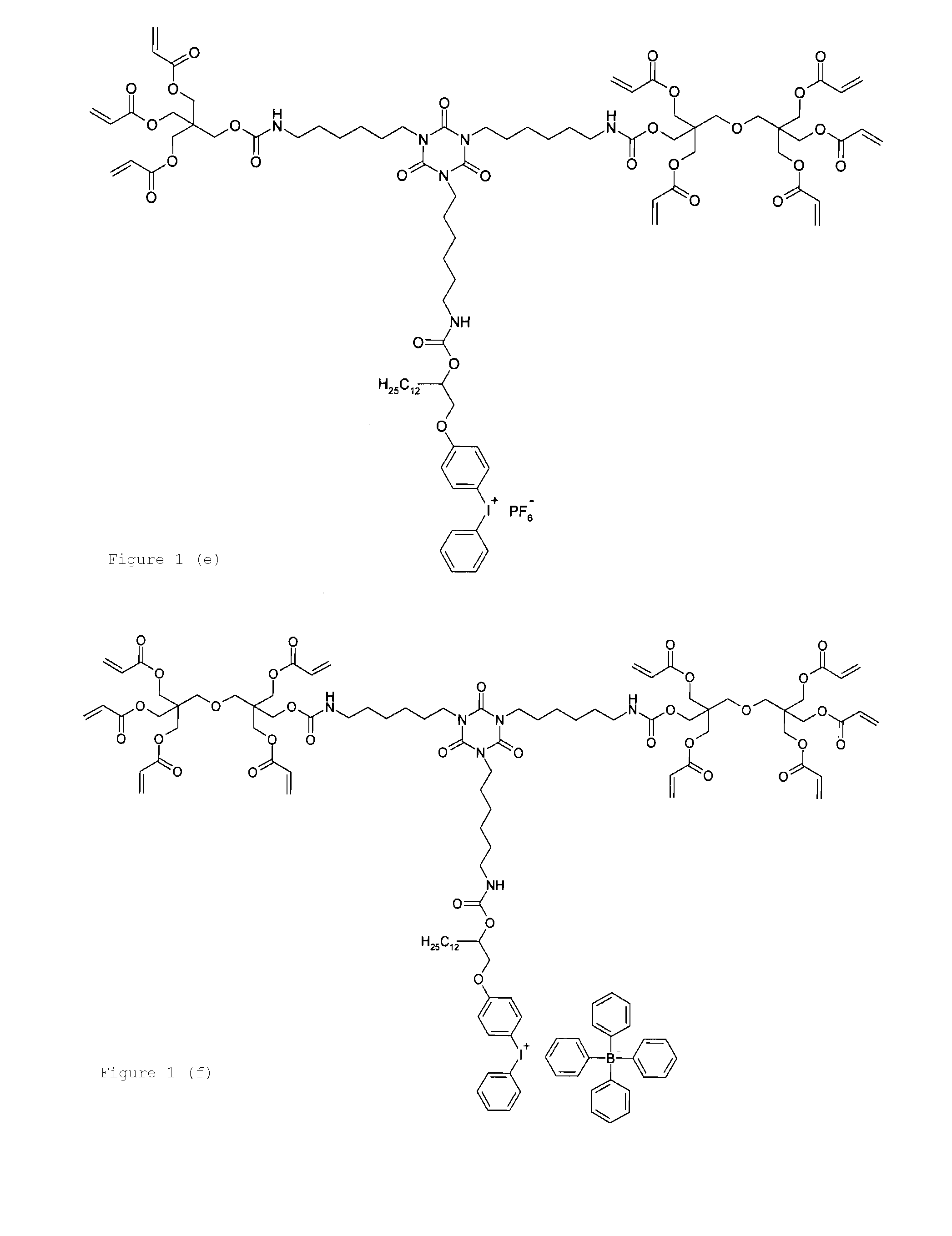Gallotannic compounds for lithographic printing plate coating compositions
- Summary
- Abstract
- Description
- Claims
- Application Information
AI Technical Summary
Benefits of technology
Problems solved by technology
Method used
Image
Examples
example 1
[0279]Gallotannic compound RGT-01 shown in FIG. 2 was synthesized by slowly adding 155 grams of 2-isocyanatoethyl methacrylate (10 equivalents) in 500 grams anhydrous 1,3-dioxolane to a reaction flask containing 800 grams of anhydrous 1,3-dioxolane, in which were dissolved 170.1 grams of gallotannin (1 equivalent) and 0.5 grams of dibutyl tin dilaurate at 50° C., under oxygen atmosphere with constant stirring. After 30 hours of reaction, a sample of the reaction mixture was withdrawn from the reaction flask and its FTIR spectrum, recorded on KBr pellet, showed no —N═C═O peak at 2274 cm−1, which indicated that the reaction was completed. The solid content of RGT-01 was adjusted to 20% by weight using 1,3-dioxolane.
example 2
[0280]Gallotannic compound RGT-02 shown in FIG. 3 was synthesized by slowly adding 42.0 grams of sodium hydride (10.5 equivalents) to a reaction flask containing 500 grams of anhydrous N,N-dimethylacetamide, in which were dissolved 170.1 grams of gallotannin under nitrogen atmosphere with constant stirring. About three hours later, the release of hydrogen gas by-product ceased and a solution containing 300 grams of N,N-dimethylacetamide and 209 grams of MMEA (10 equivalents) was slowly added to the reaction mixture. The reaction was stopped after 10 hours at 50° C. The solvent was removed using a rotary evaporator under vacuum until dry. The obtained solid was dissolved in anhydrous 1,3-dioxolane to provide a 20% solid solution. It was then gravity filtered to remove sodium chloride by-product.
example 3
[0281]The synthesis of Gallo-25X was performed by slowly adding 150 grams of a 1,3-dioxolane solution containing 37.4 grams of NCO-0747 into a mixture containing 100 grams of 1,3-dioxolane, 17.0 grams of gallotannin and 0.1 grams of dibutyl tin dilaurate under oxygen atmosphere and constant stirring at 57° C. After 5 hours of reaction, a sample was withdrawn from the reaction for FTIR analysis. The —NCO stretching band at 2210 cm−1 had disappeared, which indicated that the reaction was complete. The solution was adjusted with 1,3-dioxolane to give 20% solid weight, which is a solution that is ready for use in coating plates. The idealized chemical structure of Gallo-25X is shown in FIG. 4.
[0282]Gallotannic Compounds with Initiators
[0283]Initiators for Thermal Plates
PUM
| Property | Measurement | Unit |
|---|---|---|
| Fraction | aaaaa | aaaaa |
| Molar mass | aaaaa | aaaaa |
| Mass | aaaaa | aaaaa |
Abstract
Description
Claims
Application Information
 Login to View More
Login to View More - R&D
- Intellectual Property
- Life Sciences
- Materials
- Tech Scout
- Unparalleled Data Quality
- Higher Quality Content
- 60% Fewer Hallucinations
Browse by: Latest US Patents, China's latest patents, Technical Efficacy Thesaurus, Application Domain, Technology Topic, Popular Technical Reports.
© 2025 PatSnap. All rights reserved.Legal|Privacy policy|Modern Slavery Act Transparency Statement|Sitemap|About US| Contact US: help@patsnap.com



